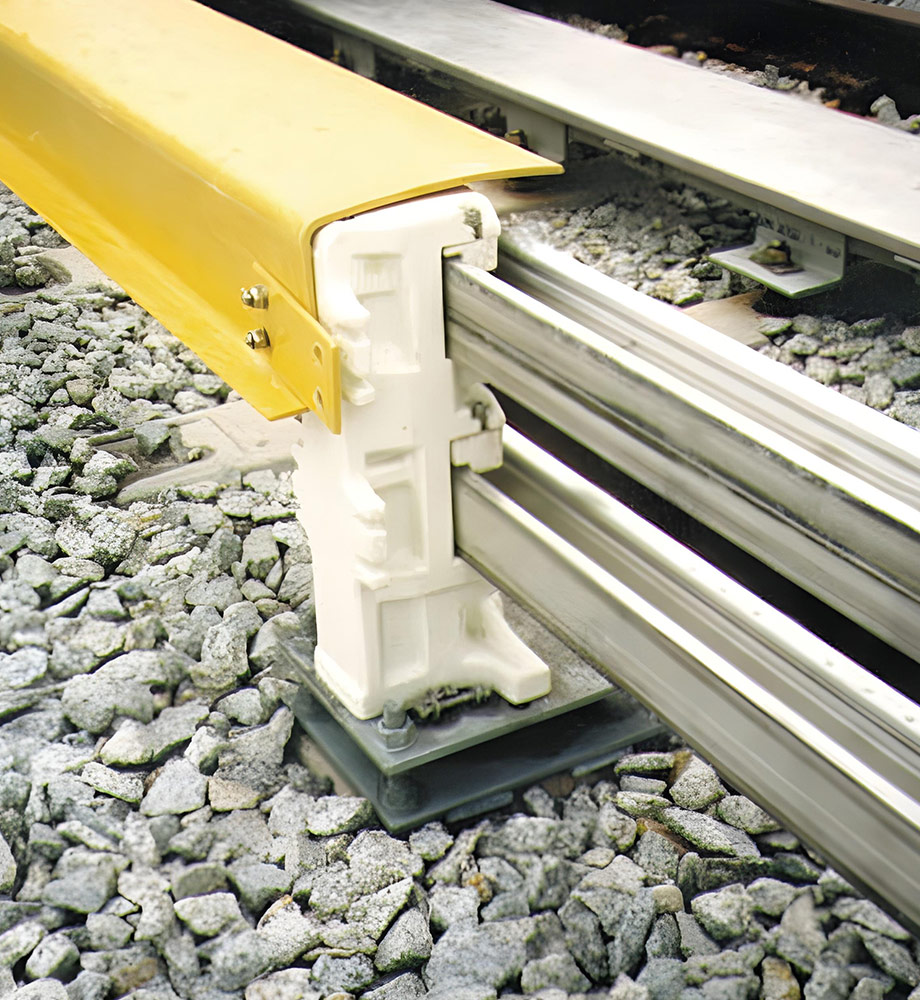Key Features
- High Dielectric Properties: Fiberglass insulators withstand high voltages without breakdown.
- Mechanical Strength: Engineered to support rail loads (bending, shear, and torsion) from passing trains.
- Weatherproof: Impervious to moisture, salt spray, and UV, maintaining insulation in all climates.
- Lightweight Fabrication: FRP insulators weigh much less than porcelain, simplifying handling.
- Variety of Form Factors: Available as posts, stanchions, and slabs for top, under, or side-contact third-rail systems.
Benefits
- Electrical Safety: Prevents short-circuiting of the third rail to the track, ensuring system continuity.
- Durability: FRP insulators last decades in the field with minimal degradation.
- Non-Destructive Maintenance: Low brittleness means fewer breakages during rail replacement or cleaning.
- Easy Replacement: Standardized sizes and slots for bolts allow quick swap-out during maintenance.
Applications
- Support insulators for top-contact and bottom-contact third rail systems
- Components in electrified rail stations, yards, and maintenance facilities
- Any rail transit project requiring non-porous, high-strength isolation hardware
Technical Specifications
- Material: Pultruded E-glass fiberglass or BMC (bulk molding compound); sometimes porcelain FRP
- Dimensions: Post heights ~100–300 mm, thickness ~20–50 mm depending on design
- Load Ratings: Tensile strength up to 200 MPa; dielectric strength >20 kV/mm
- Standards: Complies with IEEE or AREMA rail insulation standards where applicable
Unique Selling Points (USPs)
- Proven Transit Use: Trusted by virtually all North American heavy rail transit systems for third-rail support
- Low-Profile Designs: Can be made compact to fit constrained trackside space
- Dual Materials: Offered in both fiberglass and porcelain (for customers needing familiar material)

